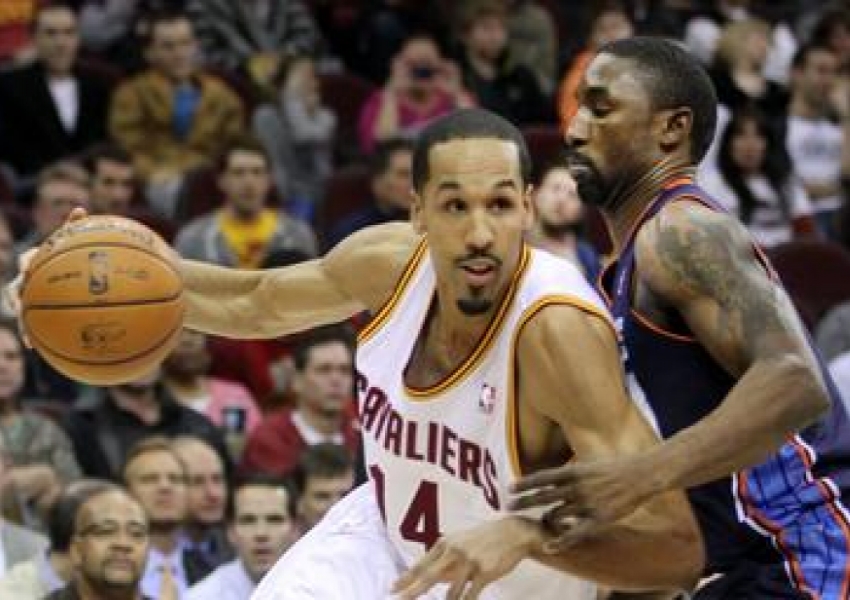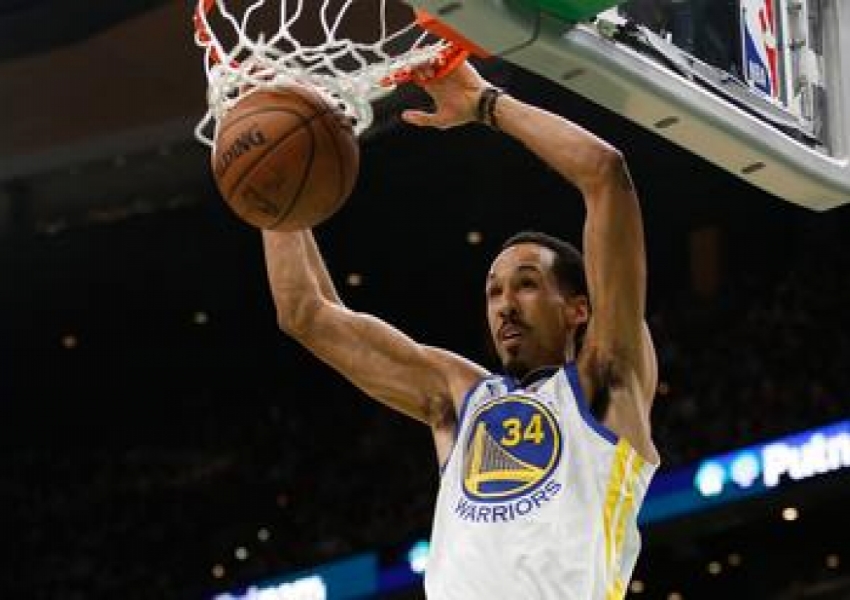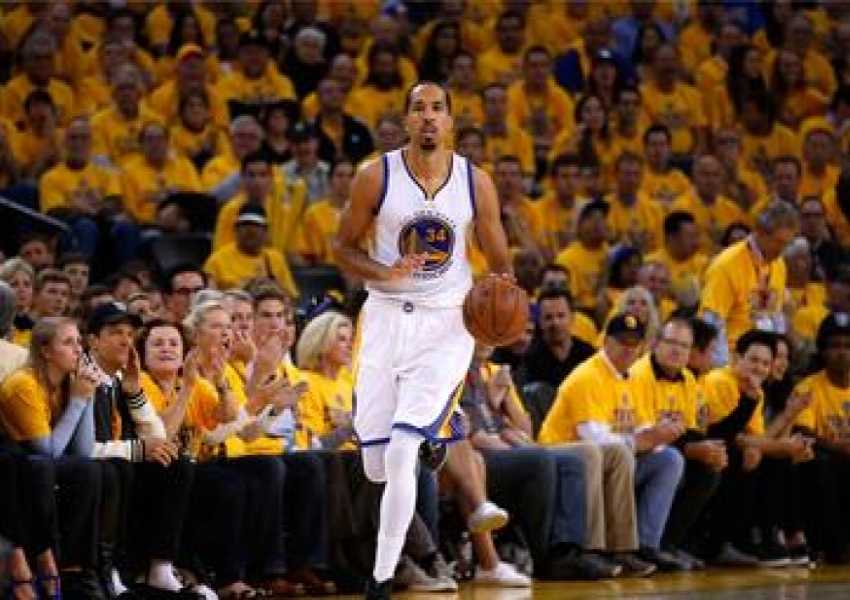From Rock Bottom to the Backbone of a Dynasty: The Inspirational Journey of Shaun Livingston
“I kept running, just to catch up with the version of myself that once carried all the hope.” That quote from Shaun Livingston encapsulates a life shaped not only by basketball, but by unimaginable adversity, personal reinvention, and quiet greatness.

Livingston's name doesn't resonate in the same echelon as Kobe, Jordan, or Shaq. But his story might just be one of the most powerful ever told in the annals of the NBA—a narrative so staggering, it feels more like cinema than sport. From a fractured family and a lonely childhood to one of the most gruesome injuries in league history, followed by a slow-burning, redemptive rise to become a foundational piece of a championship dynasty—this is the legend of Shaun Livingston.

A Childhood in the Margins
Born in 1985 in Peoria, Illinois, Shaun Livingston entered the world under circumstances stacked against him. Early marriage and early parenthood were common at the time, and his parents—barely out of their teens—split shortly after his birth. A toddler left in the care of a young, unprepared mother, Shaun spent much of his early years in daycare, often isolated, sitting quietly in corners, overlooked and left out by other children. His father, Reggie, during a rare visit, was heartbroken to witness his son's loneliness. He took custody and vowed to give Shaun a better shot.

Reggie wasn’t wealthy, but he was determined. He scraped together enough to send Shaun to one of the best private schools in the area and kept him on a disciplined path. It was around this time that Shaun discovered a VHS tape that would change everything: a Penny Hardaway highlight reel. The fluidity, the vision, the elegance—Livingston was hooked. He began studying every move, mimicking every pass and dribble. Basketball wasn’t just a game. It became his escape, his identity, his salvation.
The Prodigy Rises
By middle school, Livingston was already dominating the court. By high school, he was a two-time state champion and hailed as the No. 1 high school player in the nation. He had size—6’7” with a 7-foot wingspan—as well as grace, basketball IQ, and defensive versatility. He could guard three positions, run the point like a floor general, and score from anywhere inside the arc with his feathery jumper.
Coach K personally flew out to recruit him for Duke. But Livingston, oozing with confidence and belief in his destiny, opted to declare for the 2004 NBA Draft straight out of high school. The Clippers selected him fourth overall, making him the first high school point guard ever drafted that high.
Everyone expected him to usher in a new era of big, cerebral floor generals. And for a while, it looked like he might.
The Injury That Changed Everything
On February 26, 2007, during a fast break against the Charlotte Bobcats, Livingston went up for a layup and landed awkwardly. The result was catastrophic. His leg bent the wrong way. The knee twisted, snapped, and dislocated in multiple directions. Fans in the arena gasped. Players turned away. Commentators were speechless.
The diagnosis was horrifying: torn ACL, torn PCL, torn MCL, dislocated kneecap, torn meniscus. As one Clippers staff member put it: “His leg was held together by skin.” Doctors weren’t sure he’d ever walk properly again, let alone play basketball.
When he awoke from the five-hour surgery, Livingston’s first question was, “Will I play again?” The answer was brutally honest: “If you can walk normally, that’ll be a miracle.”
The Long Road Back
Most would’ve quit. And who could blame them? Livingston didn’t. Despite the physical agony and the emotional toll, he dedicated himself to a grueling rehab process. Eight hours a day, every day, he pushed his body through pain that bordered on unbearable. Stretching. Bending. Relearning the basics.
He called it “a knife to the soul” each time he bent that knee. But he never stopped. “If I can breathe, I can fight,” he told himself.
By 2008, Livingston was back in the NBA. But the fairytale wasn’t there yet. The next several years were a whirlwind of short-term contracts and waived deals—Heat, Grizzlies, Thunder, Wizards, Bobcats, Rockets, Cavs, and Nets. He was a journeyman clinging to hope.
Then came the summer of 2014.
The Call That Changed His Life
At age 29, Livingston received a call that would change his legacy. On the other end of the line: Bob Myers, GM of the Golden State Warriors.
Myers laid out a vision. He didn’t just offer a contract—he offered a role, a purpose, a home. Livingston listened. And accepted.
What followed was one of the most underrated career renaissances in NBA history.
The Steady Hand of a Dynasty
Livingston became the ideal second-unit general in Steve Kerr’s newly implemented “death lineup” era. While the starters rained threes, Livingston brought poise, defense, and mid-range mastery to the bench unit. His calm demeanor, smart decision-making, and veteran leadership stabilized the team during critical moments.
He didn’t shoot threes. He didn’t put up flashy numbers. But his fadeaway from the baseline? Automatic. His defensive switches? Impeccable. His ability to execute in crunch time? Irreplaceable.
In five years with Golden State, Livingston helped the Warriors win three championships (2015, 2017, 2018), appearing in five straight Finals. He was the classic “glue guy,” the connective tissue that bound the stars together.
A player who once wondered if he’d ever walk again was now a key contributor on one of the greatest dynasties the league has ever seen.
Legacy and Life Beyond Basketball
In 2019, Livingston retired. His body had given everything it had. His right knee still bears a 5-inch scar, but he no longer hides it. He embraces it.
“It reminds me,” he said, “that life can destroy your body, but it can’t kill your spirit.”
Post-retirement, Livingston remained with the Warriors organization, moving into the front office. He’s since become a mentor for young players, helping them navigate the pressures of the game—both physically and mentally. He also launched the “Livingston Scholarship Initiative,” supporting underprivileged youth in his hometown of Peoria.
A Legacy Written in Steel, Not Flash
Livingston’s story isn’t about MVPs, scoring titles, or highlight reels. It’s about resilience. It’s about how a kid written off by doctors and teams alike came back—not just to play, but to win. To lead. To inspire.
When fans revisit that terrifying injury clip from 2007, the comment sections are no longer filled with horror or pity. They’re filled with one word: Respect.
Livingston never got the spotlight. But he earned something more enduring: reverence. His career is a masterclass in perseverance, humility, and grace under fire.
As he wrote in his autobiography Rebirth:
“I lost the lightning in my legs, but I found something stronger—a heart that never stops beating.”
Shaun Livingston didn’t just return. He rose. He stood tall—literally and figuratively. And in doing so, he left a legacy etched not just in banners, but in every athlete who dares to dream again after falling.
Copyright Statement:
Author: focusnba
Source: FocusNBA
The copyright of this article belongs to the author. Reproduction is not allowed without permission.
Recommended Blog
- Minus-9 in a Statement Win: Can Jonathan Kuminga Still Be Saved?
- 0-for-7 in the Fourth: How Bad Is Jayson Tatum in the Clutch, Really?
- Outcoached, Outplayed: How the Thunder Let Game 1 Slip Through Their Fingers
- Standing Tall in Defeat: Just How Good Is 22-Year-Old Amen Thompson?
- Game 7 Heartbreak: Where Did the Rockets Fall Short, and Is Kevin Durant the Answer?
- Watch Out, West: The Nuggets Have Found Their Fifth and Sixth Men
- Game 7 Collapse: Where Did the Clippers Really Lose This Series?
- The X-Factor Behind Houston's Game 6 Win: Why Steve Kerr Had No Answer for the Rockets’ Twin Towers
- 43 Million! How Bad Is Fred VanVleet's Playoff Struggle?
- Official Announcement! Did Gordon's Shot Violate the Deadline? Has Denver Shown Its Full Hand?